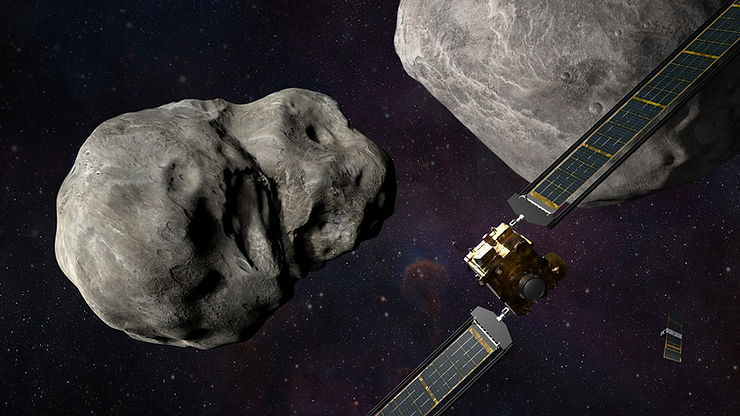By: David Wang
People often think a bit too much about how technology can save the world. Like there is a world-threatening catastrophe looming on the horizon, a nuclear bomb can blow it up, and voila! Problem solved. That’s really not the case, but if used correctly, we can use technology to prevent asteroids from obliterating civilization. Telescopes that browse space are manned by astronomers, but their systematic movements are overseen by code. Because of how vast space is, telescopes rely on algorithms to identify potentially deadly objects such as asteroids.
Conventional algorithms need four images taken in the span of a single night to determine if the object is a genuine space rock. But researchers at the University of Washington have made new software that cuts that number by half. That improves the ability of observatories to determine these objects. This program, HelioLinc3D, has already found an undiscovered asteroid circling near Earth.
HelioLinc3D analyzed data from a NASA-funded survey called ATLAS (short for Asteroid Terrestrial-impact Last Alert System) and found a previously unknown asteroid 600 feet long, enough to devastate a big city. This asteroid, named 2022 SF289, is classified as potentially dangerous, with a closest approach of 140,000 miles within Earth’s orbit. That’s half the distance of the moon, and it will not come in contact with Earth for the next century, and very likely not for many millennia to come.
Helping bolster previous surveys’ efforts isn’t the only thing it will do. This program was specifically designed for the Vera C. Rubin Observatory in Chile, and the observatory’s massive camera, expansive eye and huge mirror will see pretty much everything out there that the night sky has to offer. The Rubin telescope is designed so that it can quickly sweep the night and without HelioLinc3D, it would be impossible to reveal the asteroid-filled neighborhood around our planet.
Across the world, asteroid-hunting surveys have found and identified roughly 32,000+ near-Earth (around 7.5 million kilometers within Earth) asteroids. And the ones big enough to cause planet-scale destruction have been found. But the ones that are at least 460 feet long are harder to find. Most of them haven’t been found, with 10,500 discovered out of an estimated 25,000. Why is that so? Weather conditions, the extreme faintness of an object or the glare of a brighter star, or galaxy doesn’t always allow for 4 photos per night. And that is not ideal for planetary defense at all.
The Rubin Observatory will begin its 10-year survey of the sky in about 2 years. It can see extremely faint objects in the sky, such as asteroids with city-killing potential. Using HelioLinc3D, they only need the images on 3 nonconsecutive nights. The next generation instruments the Rubin Observatory has will allow them to categorize all moving objects, including interstellar entities, icy worlds beyond Neptune and comets. The hope here is to discover the mysteries that the rest of the dark and vast universe holds.











